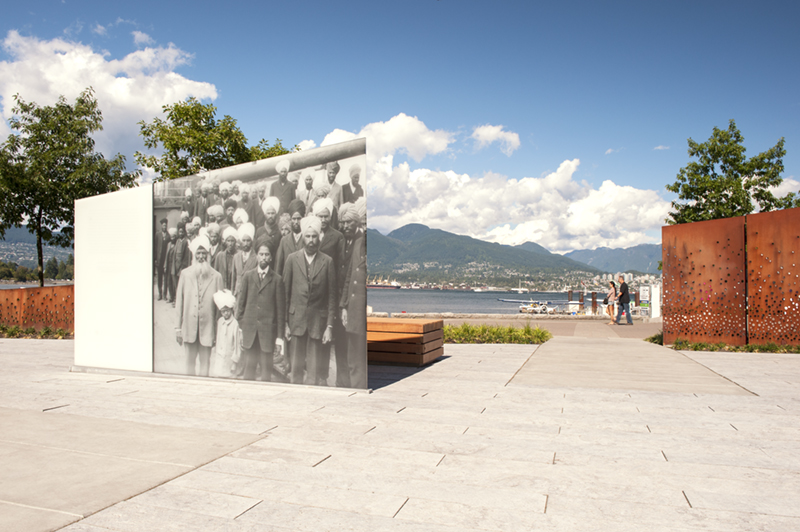#496 Too much sail, not enough ballast
March 01st, 2019

Across Oceans of Law: The Komagata Maru and Jurisdiction in the Time of Empire
by Renisa Mawani
Durham, North Carolina: Duke University Press, 2018
$27.95 (U.S.) / 9780822370352
Reviewed by Hugh Johnston
*
 Renisa Mawani writes a thoroughly academic prose, not intended for a casual audience. Even so, her book will have fans, especially among keen students of postcolonial studies. Indeed, it already has the stamp of approval from the three postcolonial studies scholars who reviewed her manuscript for Duke University Press. All three are contemporary leaders in a field of research inspired by the eminent Palestinian-American scholar Edward Said and his book Orientalism (now over 40 years in print and still going strong). These reviewers are best known for work on African literature, convicts and penal colonies, and Gandhi’s early South African journalism. None has much knowledge of the tragic, more than 100-year old, Canadian story of the Punjabi immigrant ship Komagata Maru. But they have recognized in Renisa Mawani’s writing a perspective, a vocabulary, and a theoretical approach to the study of empire, colonized peoples, and race relations that they can warmly endorse. Nonetheless, their approval leaves big questions about what she actually says.
Renisa Mawani writes a thoroughly academic prose, not intended for a casual audience. Even so, her book will have fans, especially among keen students of postcolonial studies. Indeed, it already has the stamp of approval from the three postcolonial studies scholars who reviewed her manuscript for Duke University Press. All three are contemporary leaders in a field of research inspired by the eminent Palestinian-American scholar Edward Said and his book Orientalism (now over 40 years in print and still going strong). These reviewers are best known for work on African literature, convicts and penal colonies, and Gandhi’s early South African journalism. None has much knowledge of the tragic, more than 100-year old, Canadian story of the Punjabi immigrant ship Komagata Maru. But they have recognized in Renisa Mawani’s writing a perspective, a vocabulary, and a theoretical approach to the study of empire, colonized peoples, and race relations that they can warmly endorse. Nonetheless, their approval leaves big questions about what she actually says.
The title offers a set of topics — law, oceans and empire — which look grand yet unfocussed when set alongside the specific events that defined the unhappy narrative of the Komagata Maru and its 376 South Asian passengers. The phrase “oceans of law” is clever word play. But to accept it, we have to forget that the Canadian law excluding the passengers of the Komagata Maru required just a few lines of print and that it was applicable only on Canadian territory.
To state the obvious: what stopped the passengers from landing in Vancouver in the summer of 1914 was a Canadian law and its related regulations that were enforced at the shoreline. And while the ship travelled unimpeded on the open sea throughout its long journey, and did so in wartime through potentially dangerous Asian waters, it faced government controls only when it entered a port in Canada or in Asia.

Passengers on the Komagata Maru in Vancouver Harbour, 1914. James Quiney photo, City of Vancouver Archives
The controls that the passengers encountered, both during their outgoing and on their return voyage, were exercised by local harbour authorities and land-based-governments — in India, Singapore, Hong Kong, Japan, and Vancouver. Mawani writes vaguely about common law, admiralty law, the freedom of the sea, and the legal boundaries between land and sea. She does so with a scattering of tenuous references, reaching as far back as the seventeenth century Dutch scholar Hugo Grotius. He is cited for his legal justification of Dutch action in taking Portuguese prizes and booty in the Singapore Strait. She makes a number of references to Grotius throughout her book because she thinks his centuries-old treatise on the freedom of the seas tells us something about the Komagata Maru. But it is hard to see the connection.
Kartar Singh on his visit to Vancouver in 1976 with hockey legend Fred “Cyclone” Taylor, who was an immigration agent when the Komagata Maru was turned back. Photo by Rob Straight, Vancouver Sun
Early in my own research, I interviewed an elderly Sikh, Kartar Singh, who had been a passenger on the Komagata Maru. I interviewed him in 1976 when he was ninety-two, but still able to give a very good account of what had happened sixty-two years earlier. He said he had decided to emigrate from Punjab to North America after reading an Urdu language report of rich farmland in the United States. He told me that wanting to buy and farm some of this productive land, he crossed the Pacific on a boat from Hong Kong. He was turned back by American immigration officials after failing the pretext of a brief medical examination at Tacoma, Washington. That was one device that Americans used to keep Asian immigrants out.
It was not until he got back to Hong Kong that he learned about the Komagata Maru. It had already left for Vancouver, but it was still in Asian waters. With fourteen of his countrymen, he caught up and boarded the Komagata Maru in Yokohama. He subsequently stayed with the ship for the duration of the voyage, throughout a long summer of confinement in Vancouver and all the way back to Calcutta. He disembarked with the rest of the passengers under British Indian police control. On the day they all disembarked, prudence kept him safely away from a bloody encounter between his fellow passengers and armed troops and police. In time he got back to Punjab where he lived out his long life in his village until flying to join relatives in Vancouver a few days before I interviewed him.
Kartar Singh’s history illustrates two important aspects of the Komagata Maru episode that are passed over by Mawani, although she will know the facts. First of all, the Komagata Maru was a Punjabi story. Every one of the passengers on that ship, like Kartar Singh, was a Punjabi and it is for the Punjabi community today that the name of the ship evokes the most compelling and disturbing imagery. The episode resonates with Indo-Canadians generally, but for Punjabis it is immediate family history. We know the names and village origins of each of the Punjabi passengers, and we know the personal, prior, and subsequent stories of quite a few of them. None of this gets onto the pages of Mawani’s book. And the heartbreak of the Komagata Maru was about exclusion from North America, not just from Canada. This country has always been an entry porch for immigrant groups seeking a way into the United States. One can’t fully understand the Komagata Maru without taking that into account.
Mawani has the space on her pages to discuss at length many subjects: the Atlantic slave trade, South African race relations, indentured immigration to the Caribbean and Malaya, and the global treatment of Indigenous peoples. She explains that she is using a single ship to explore broader themes. But her broader themes don’t include vital parts of the Komagata Maru story. There are also more slips in this book than ideal, slips involving wrong numbers, misconceptions of the law, and faulty attributions. They look like the results of extensive but hasty reading.
In her years of research Mawani has found many interesting items. These include a sardonic cartoon published in Bombay just as Komagata Maru left Hong Kong. The cartoon appeared in Hindi Punch, a publication of the prosperous, westernized, and anglophile Parsi community of Bombay. It suggests a bitter outcome for the passengers. A well-groomed, solidly built Sikh with his travelling bag in hand, stands before an entrance to Canada while a young Pocahontas bars the way. She is pictured as a First Nations woman in a feather headdress, a belted tunic, and moccasin boots. Mawani discusses this cartoon for two full pages. It is curious imagery, but is worth a long look for what it tries to say — from a century ago — about white entitlement and race relations.
*
Hugh Johnston is a professor emeritus in history at Simon Fraser University, where he has taught for many years. His publications include The Voyage of the Komagata Maru: The Sikh Challenge to Canada’s Colour Bar (Oxford University Press, 1979; UBC Press, revised edition, 2014); The Four Quarters of the Night: the Life Story of an Emigrant Sikh (with Tara Singh Bains; McGill-Queens University Press, 1995); and Jewels of the Qila: The Remarkable Story of an Indo-Canadian Family (UBC Press, 2011).
*
The Ormsby Review. More Books. More Reviews. More Often.
Editor/Designer/Writer: Richard Mackie
Publisher/Writer: Alan Twigg
The Ormsby Review is a journal service for serious coverage of B.C. books and authors, hosted by Simon Fraser University. The Advisory Board consists of Jean Barman, Robin Fisher, Cole Harris, Wade Davis, Hugh Johnston, Patricia Roy, David Stouck, and Graeme Wynn. Scholarly Patron: SFU Graduate Liberal Studies. Honorary Patron: Yosef Wosk. As of September, 2018, Provincial Government Patron: Creative BC
“Only connect.” – E.M. Forster

The Komagata Maru Memorial, Harbour Green Park, Vancouver, unveiled in 2012. Photo courtesy Lees & Associates







Leave a Reply